This stream carries sediment that has weathered from mountains in Alaska.
Click on image for full size
Courtesy of Bruce Molnia, Terra Photographics
Step 2: Sediments on the Move!
If you sneeze into a pile of dust, the little particles fly everywhere. But if you sneeze into a pile of rocks, they will stay put. It takes more force than a sneeze to move those rocks. Winds and water can have enough force to move rocks.
Larger pieces of sediment can be carried in a stronger current, like fast moving water. Very small particles like silt and clay can be carried by even slow current and settle very slowly. They only form layers at the bottom of quiet water areas like lakes, swamps, or lagoons.
The size of the sediment in a clastic sedimentary rock usually relates directly to the energy of the wind and water that they were deposited in. Sediment that can sink to the bottom in a fast moving river must be very large and heavy. Smaller particles are carried away. However, in a calm lake, even very small pieces of sediment are able to settle to the bottom.
Last modified August 25, 2003 by Lisa Gardiner.
You might also be interested in:

Wind is moving air. Warm air rises, and cool air comes in to take its place. This movement creates different pressures in the atmosphere which creates the winds around the globe. Since the Earth spins,
...more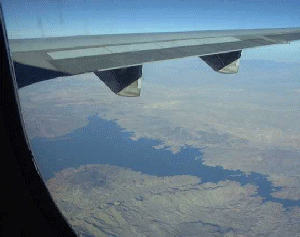
Rivers are very important to Earth because they are major forces that shape the landscape. Also, they provide transportation and water for drinking, washing and farming. Rivers can flow on land or underground
...more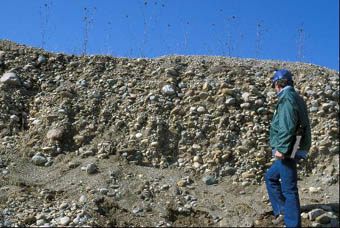
When water or wind loses energy and slows down, sediment can no longer be carried in it. The particles fall through the water or air and form a blanket of sediment on the bottom of a river, a lake, ocean,
...more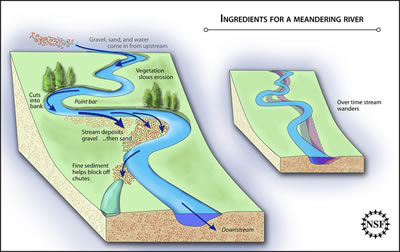
Scientists have built a scale model of a living, meandering river in a lab. From the model they have learned a few things: the importance of vegetation to reinforce the river banks and the importance of
...more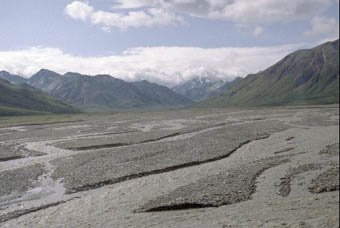
If you sneeze into a pile of dust, the little particles fly everywhere. But if you sneeze into a pile of rocks, they will stay put. It takes more force than a sneeze to move those rocks. Winds and water
...more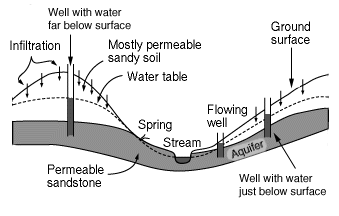
An aquifer is the name for a layer of rock which is capable of holding a large amount of water. Some layers are better at holding water than others, for example a layer of sandstone can hold a good deal
...more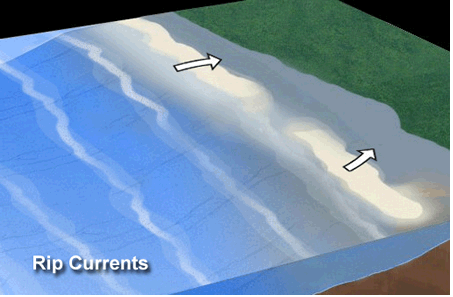
Ocean waves often move towards a beach at an angle. This moves water along the coast in a longshore current. Longshore currents grow stronger when the waves come towards the beach at a large angle. The
...more














